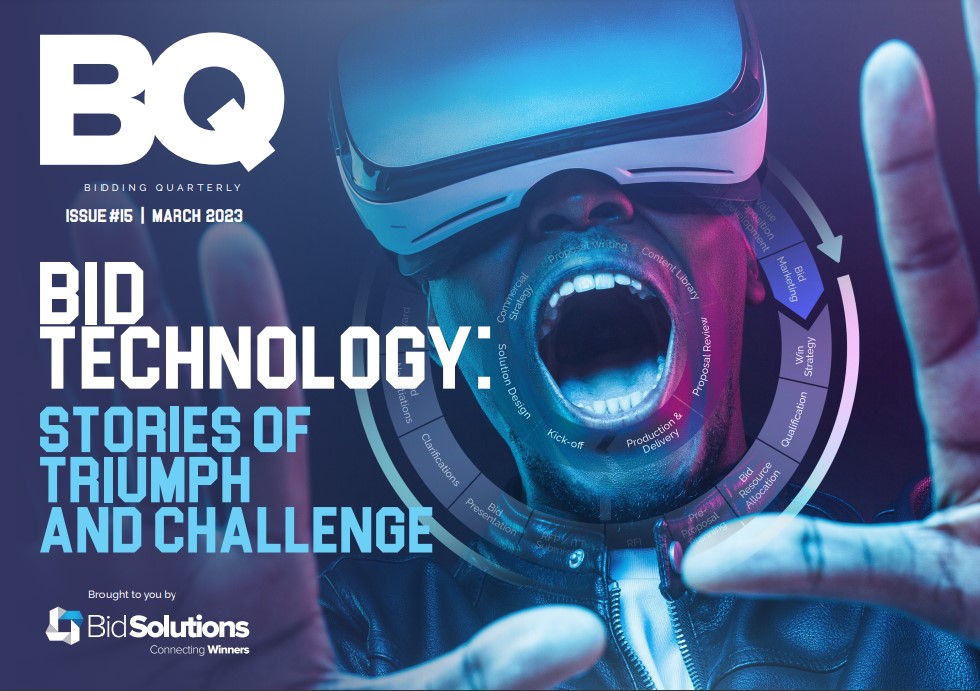
Full confessional disclosure – Artificial Intelligence (AI) is not something I have dwelled upon in my career as a bid professional. AI is something I have always associated with robotics in a high security lab somewhere, not a tool that could be used to enhance and streamline bidding work.
Recently, there has been a lot of press coverage about the use of ChatGPT (Chat Generative Pre-trained Transformer), an AI powered chatbot designed to respond to questions in a text format and sound convincingly like a human. ChatGPT utilises information from the internet to respond accordingly, including appropriate follow-up questions.
Some of the biggest concerns around this technology has been the use of it within educational institutions and students using it to complete assignments. This has got me thinking about its use in the bidding profession and its potential impacts – both positive and negative.
The technology could have a positive impact at the very early stages of the bid process of capture management, where you are gathering insight and building a win strategy based on what you have discovered about a potential client.
ChatGPT could be used to obtain useful research, such as competitor analysis, to feed into the capture management plan. However, even ChatGPT could have its limitations here by not accounting for important pre-tender engagement with the client to really understand their key procurement drivers and project objectives.
My biggest concerns with using AI as standard practice within bidding is that lateral thinking and collaborative working, which really underpins a great tender submission, could be replaced with something much more utilitarian and lacklustre.
One of the main joys of being involved with bids is the continual interaction with your internal subject matter experts (SMEs). This meaningful engagement through storyboarding sessions, workshops and focussed review meetings really draws out the innovation and original ideas to help ensure the bid is of highest possible quality.
Indeed, if there was an increase in the use of AI to respond to the tender questions, would buying authorities start to see very repetitive tender submissions from all suppliers?
With no distinguishable features between suppliers during the tender process, buyers may find it difficult to gauge which supplier is best placed to service their contract in the long term.
External AI may still be in its infancy in the bidding sector but there are many other ‘tech tools’ available, particularly to assist content management for bid submissions. Systems such as EasyPQQ, a cloud-based bid management system with an internal AI search engine, has been (mostly) beneficial when used in past roles.
The main feature I enjoyed was having access to previous responses/content to build the new bid’s response. From memory, though, this needed to be handled with caution: running word searches to find relevant information would often bring up too many search results.
Anecdotally, on occasion it may have been quicker to write a bid response from scratch than search on the system for the information you needed, due to the nature of the key word search function.
The overarching issue with such software is ensuring there is sufficient human resource to manage and input the correct information. It is important to avoid a RIRO (Rubbish in, rubbish out) system that communicates out of date information in your bids.
However, specific bidding tech with an internal AI search function (managed properly) could be highly beneficial for emphasising the importance of the bid process when working with internal SMEs. This collaborative tool can encourage their input into tricky technical questions (providing the time and space to do so) and bring great benefits to an organisation.
If the basis for bidding is collaborative working, lateral thinking and coming up with winning concepts with your fellow humans, technology can be layered in to enable this. I do believe these tools should be used with care, consideration and at a pace which still allows extensive human interaction and knowledge sharing to devise the direction and agreed content of a bid.
The two elements combined – artificial systems and human knowledge – can really help organisations to use AI accordingly and turn it into BI – Bidding Intelligence.
This article was written by Bella Stevenson.
Bella started her career in bids over 15 years ago, coordinating EMEA-wide bid submissions for a recruitment consultancy. For the last 11 years, she has worked as a Bid Manager, mainly within the built environment, but also in sectors as diverse as facilities management, security, dentistry and most recently, the E-mobility sector with char. gy. She enjoys collaborating with technical teams via workshops and review sessions to build win themes, install best practice and develop creative thinking to win more contracts and help organisations meet their business development objectives.

